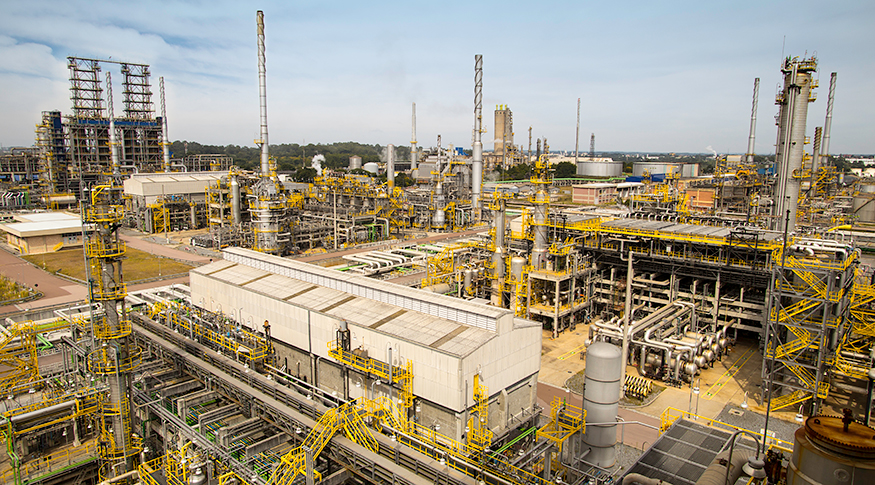IPP
Industry prices fall 0.31% in January, third drop in a row
March 05, 2024 09h00 AM | Last Updated: March 07, 2024 12h06 PM
 The sector of petroleum refining and biofuels (-4.77%) was the one with the most intense change and greatest influence (-0.51 pp) on the January IPP - Photo: André Motta de Souza/Petrobras
The sector of petroleum refining and biofuels (-4.77%) was the one with the most intense change and greatest influence (-0.51 pp) on the January IPP - Photo: André Motta de Souza/PetrobrasFor the third time in a row, national industry prices recorded a drop, with a reduction of 0.31% in January 2024 compared to December 2023. The Producer Price Index (IPP), thus, accumulates a decline of 5.56% in 12 months. In January 2023, the rate was 0.29%.
In January 2024, eight of the 24 industrial activities surveyed showed negative price changes when compared to the previous month, following the change in the general industry index. In December last year, 12 activities had lower average prices compared to the previous month. The data was released today (5) by the IBGE.
“This sequence of negative IPP results comes after a series of three consecutive months of increases, between August and October last year. Despite the index of -0.31% in January, there was no widespread decline across the entire industry, as 15 sectors saw price increases. The cumulative reduction of 5.56% in the last 12 months represents the 11th consecutive negative result in this indicator, an unprecedented event”, explains Murilo Alvim, analyst at IPP.
From November to January, the IPP accumulated a drop of 0.85%, less than the increase of 2.91% accumulated between August and October. Thus, in the last six months, the cumulative result was 2.03%.
The industrial activities responsible for the biggest influences on the January result were petroleum refining and biofuels (-0.51 pp), mining and quarrying industries (0.23 pp), food (-0.18 pp) and basic metals (0.07 pp).
The petroleum refining and biofuels sector (-4.77%) showed a negative change for the second month in a row. In December last year, it had registered -4.03%. The cumulative result in 12 months was -18.26%, completing a series of 11 negative results. “This refining performance comes after four consecutive increases. The prices of diesel fuel, product with the greatest weight in the activity, were the main responsible for this result, as they have been on a downward trend in refineries since December 2023. Ethanol is also not in great demand, in addition to having a good sugarcane harvest, which influences the result”, adds Mr. Alvin.
The food sector, which appears among the main influences on the industry's overall result, showed a drop of 0.74%, after a series of four consecutive positive results. According to the IBGE analyst, “the lower sugar prices, also largely due to the sugarcane harvest, and and low prices of soybean derivatives, a commodity that has been showing stable production and without demand pressure, are the main responsible for the sector's decline in January.”
The activity of mining and quarrying industries (4.64%) also showed a significant, albeit positive, change. “Just as in the last month, the increase in iron ore prices was decisive for this result. The increase seen in mining and quarrying industries was the largest among all the sectors analyzed, also exerting and impact on other activities, such as basic metals, due to the increase in steel products, which use iron ore as their main input”, recalls Mr. Alvim.
Prices in the perfumery, soap and cleaning products sector, in turn, fell 2.03% compared to the previous month. The cumulative result in the last 12 months (-2.14%) is the lowest ever recorded in the survey's time series for this indicator, surpassing the change of
-0.69% recorded in 2013. Powdered soap was the main responsible for the result.
The printing sector presented an average change of 1.79%. The four products with the greatest influence on the activity's results saw increases, mainly “printed material for advertising or promotional purposes” and “customized books, brochures or printed material”. The slight price increase in the paper and pulp sector in the second half of 2023 contributed to the result.
From the perspective of the major economic categories, the price change registered between December 2023 and January 2024 had the following impact: 0.55% change in capital goods; -0.88% in intermediate goods; and 0.37% in consumer goods, with the change in durable consumer goods being 0.08%, and in semi-durable and non-durable consumer goods, 0.43%.
Learn more about IPP
The IPP tracks the average change in sales prices received by domestic producers of goods and services, and their evolution over time, revealing short-term inflationary trends in the country. It is an essential indicator for macroeconomic monitoring and a valuable analytical tool for decision-makers, either public or private.
The survey investigates, in just over 2,100 companies, the prices received by producers, exempt from taxes, tariffs and freight, defined according to the most common commercial practices. Around 6 thousand prices are collected monthly. The complete IPP tables are available on Sidra. The next release of the IPP, for February, will be on April 2nd.




















